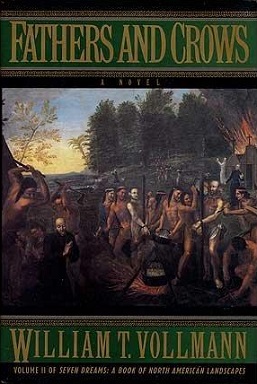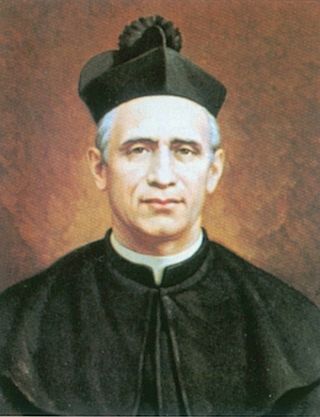Related Research Articles

Kateri Tekakwitha, given the name Tekakwitha, baptized as Catherine, and informally known as Lily of the Mohawks, is a Mohawk/Algonquin Catholic saint and virgin. Born in the Mohawk village of Ossernenon, in present-day New York, she contracted smallpox in an epidemic; her family died and her face was scarred. She converted to Catholicism at age 19. She took a vow of perpetual virginity, left her village, and moved for the remaining five years of her life to the Jesuit mission village of Kahnawake, just south of Montreal. She was beatified in 1980 by Pope John Paul II and canonized by Pope Benedict XVI at Saint Peter's Basilica on 21 October 2012.
A prayer circle is most simply where participants join hands in a literal circle of prayer, often as part of a vigil. Informal prayer circles have been practiced for centuries. Their recent resurgence in popularity is frequently attributed to their use in the Catholic Charismatic Renewal movement. Similarly, amongst North American and specifically Native American Catholics, prayer circles have formed around Kateri Tekakwitha, who was the first Native American to be beatified by the Roman Catholic Church. Tekakwitha Conference prayer circles, called Kateri Prayer Circles, have been formed on nearly all U.S. Indian Reservations. In Islam, Muslims who make the pilgrimage to Mecca will form concentric circles around the Kaaba in prayer, and these too are commonly referred to as prayer circles.

Irenaeus Frederic Baraga was a Slovenian Catholic missionary to the United States, grammarian and author of Christian poetry and hymns in Native American languages. He was the first Bishop of Sault Sainte Marie and Marquette, a post he held for 15 years.

Peshawbestown is an unincorporated community in Suttons Bay Township of Leelanau in the U.S. state of Michigan. In historical documents, the name is spelled variously as Peshabetown, Peshabatown, Pshawbatown, Preshabestown.
Joanne Lynn Shenandoah was a Native American singer, composer, and multi-instrumentalist based in the United States. She was a citizen of the Oneida Indian Nation, Wolf clan, based in New York. Her music combined traditional melodies with a blend of modern instrumentation, and her lyrics conveyed her interests in nature, women's lives and Iroquois culture.

Auriesville is a hamlet in the northern part of New York state and west of Albany. It was the site of Ossernenon, a Mohawk village where French Jesuits established a mission. This operated from 1667 until 1684, when the Mohawk destroyed it as part of continuing confrontations with French colonists. Auries is said to have been the name of the last Mohawk known to have lived there. Later settlers named the village after him.
The Bureau of Catholic Indian Missions is a Roman Catholic institution created in 1874 by J. Roosevelt Bayley, Archbishop of Baltimore, for the protection and promotion of Catholic mission interests among Native Americans in the United States. It is currently one of the three constituent members of the Black and Indian Mission Office.

The Cross in the Woods is a Catholic shrine located at 7078 M-68 in Indian River, Michigan. It was declared a national shrine by the United States Conference of Catholic Bishops (USCCB) on September 15, 2006. At 55 feet tall, it is the second largest crucifix in the world. The largest Crucifix is in Bardstown, KY, at 60 feet high. The largest Christian cross in the world stands at 492 feet (150m), located in the Valley of the Fallen, Spain.

Fathers and Crows is a 1992 historical novel by the American author William T. Vollmann. It is the second book in the seven-book series Seven Dreams: A Book of North American Landscapes.

Joseph Schrembs was a German-born prelate of the Catholic Church. He served as an auxiliary bishop of the Diocese of Grand Rapids in Michigan for five months in 1911, as bishop of the Diocese of Toledo in Ohio from 1911 to 1921, and as bishop of the Diocese of Cleveland in Ohio from 1921 to 1945.
The Commission for the Catholic Missions among the Colored People and the Indians is a U.S. Roman Catholic institution that administers a national annual appeal in support of Catholic mission work.

Caughnawaga Indian Village Site is an archaeological site located just west of Fonda in Montgomery County, New York. It is the location of a 17th-century Mohawk nation village. One of the original Five Nations of the Iroquois League, or Haudenosaunee, the Mohawk lived west of Albany and occupied much of the Mohawk Valley. Other Iroquois nations were located west of them and south of the Great Lakes.

Camp Ondessonk is an outdoor, Catholic residential youth camp run by the Diocese of Belleville. It is located in the Shawnee National Forest of Southern Illinois, near Ozark, Illinois. The mission of the camp is "Exceptional outdoor and spiritual adventures empowering kids of all ages." Camp Ondessonk is accredited by the American Camp Association.

Giovanni Battista Piamarta was an Italian Roman Catholic priest and educator. Piamarta was also the founder of the Congregation of the Holy Family of Nazareth. Piamarta established his congregation in 1900 in order to promote Christian education across the Italian peninsula. Piamarta also founded the Humble Servants of the Lord.

St. Francis Mission is a Roman Catholic mission complex on the Rosebud Indian Reservation in St. Francis, South Dakota, in territory of the Lakota (Sioux) Native Americans. The mission was founded in 1886 by priests of the Society of Jesus (Jesuits), who were welcomed by Bishop Martin Marty of the Diocese of Saint Cloud, Minnesota, which extended to this territory at the time. The Jesuit order soon developed a large complex to serve the Lakota at this reservation. Most of the buildings were destroyed by a fire in 1916, but many were soon rebuilt.
Claude Chauchetière was a French Jesuit missionary, priest, biographer, and painter. Claude Chauchetière is well known for his published work Annual Narrative of the Mission of the Sault from Its Foundation Until the Year 1686 which detailed his time in New France as a Jesuit missionary. For most of his mission work he was placed in the village of Kahnawake where he encountered Kateri Tekakwitha, an Algonquin-Mohawk Jesuit convert, an encounter that immensely impacted his spiritual life. Later on Chauchetière would also actively work to get Kateri Tekakwitha canonized as a saint.
Paul Ignatius Manhart, S.J. was ordained a Jesuit priest of the Roman Catholic Church and served in various capacities on the Pine Ridge Indian Reservation in the Roman Catholic Diocese of Rapid City. His entire priestly career was dedicated to ministering among the Oglala Lakota Native Americans. Fr. Manhart’s scholarly work in linguistics helped preserve and disseminate the living, native North American Lakota language. He was a firsthand witness and participant in the Wounded Knee incident of 1973.

Mother Mary Catherine, Sacred White Buffalo (1867-1893) was a Roman Catholic nun and member of the Hunkpapa Lakota group. She founded the Congregation of American Sisters.
The Adai Caddo Indians of Louisiana is a state-recognized tribe in Louisiana and 501(c)(3) organization in Robeline, Louisiana. Its members identify as descendants of the Adai people. The chief is John Mark Davis, as of 2023.
References
- ↑ "Tekakwitha Conference Records - History, Notable Events about Kateri Tekakwitha Native Catholics and the Tekakwitha Conference // Archives // Raynor Memorial Libraries // Marquette University".
- ↑ Cross and Feathers newsletter, Volume 32, Issue 1
- ↑ Thiel, Mark G. (2014-07-21). "75 Years of History in 2000 Years of Christianity: Why Fargo and the Tekakwitha Conference It Launched" (PDF). www.marquette.edu.